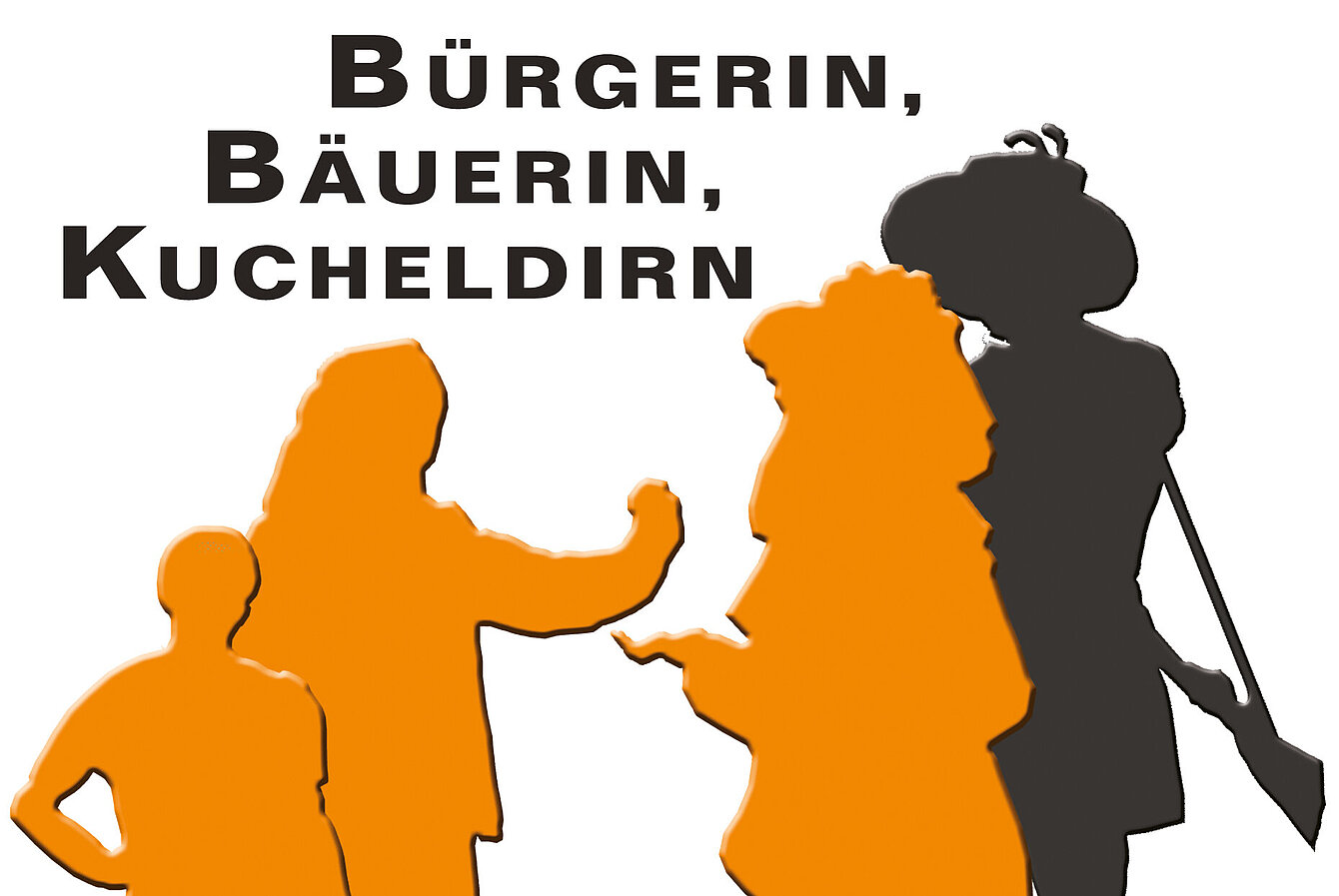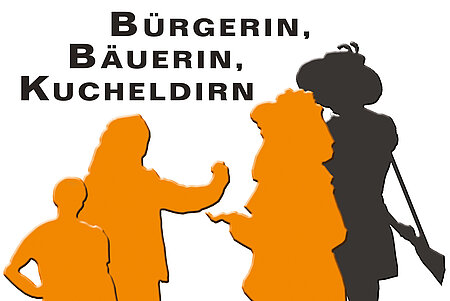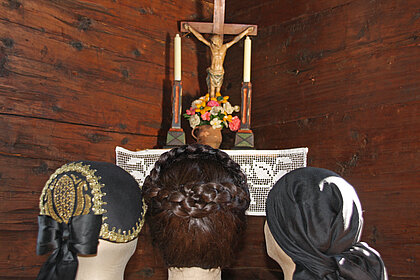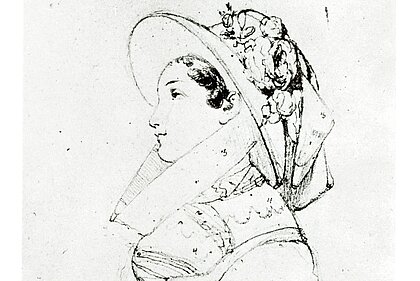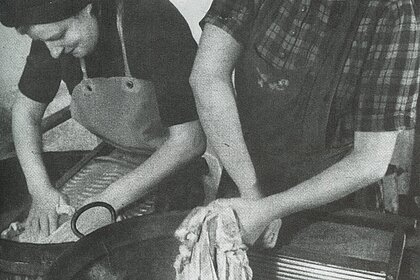In the bourgeoisie of the Biedermeier period, a type of woman developed whose senses and costumes were completely focussed on the interior of the family. As a result of the onset of industrialisation in the 19th century, living and working no longer took place under one roof. The man's gainful employment was outsourced, while the woman took care of the household and children - usually supplemented by servants. These housewife virtues became the female virtues par excellence in bourgeois morality.
At the same time, the social form of the joint household family still existed in the countryside. Women were integrated into the work process based on the division of labour and shared responsibility. The house, stable and garden were their territory. Depending on the season, they helped with the work in the fields. The rural servants made up the majority of rural society in the 15-20 age group. They lived on a farm, provided their labour and were integrated into the family. They had hardly any financial support from their parents and were dependent on their labour.




















